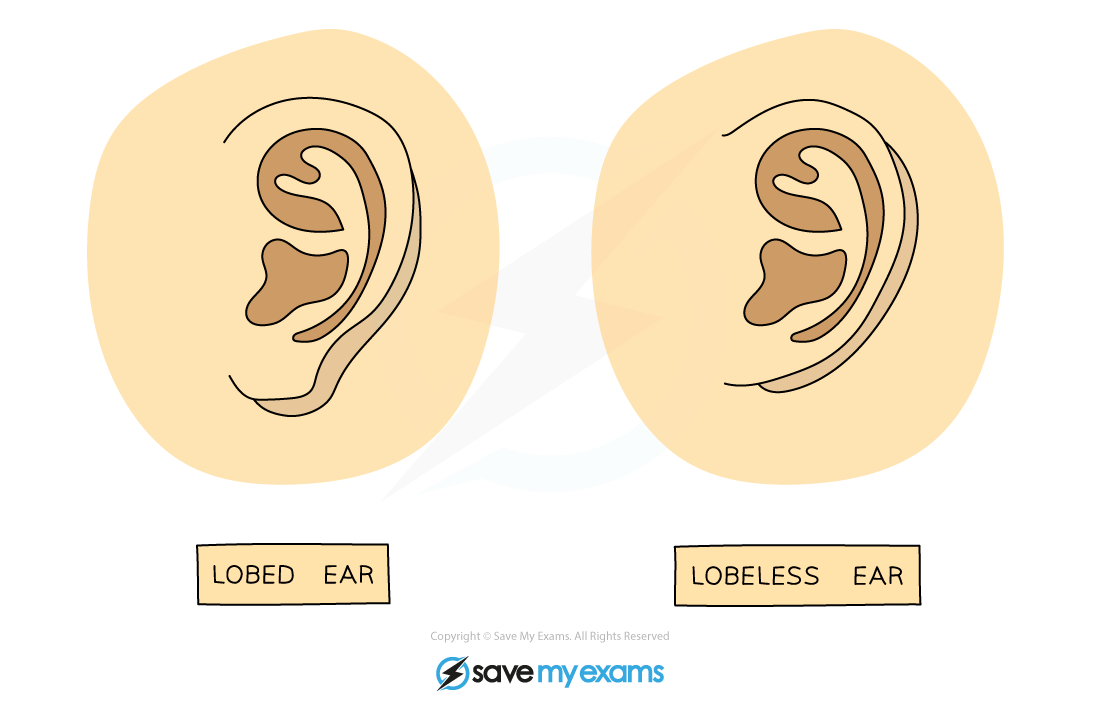Types of Variation
- Variation is defined as differences between individuals of the same species
- Variation can be divided into two types depending on how you are able to group the measurements:
- Continuous variation is when there are very many small degrees of difference for a particular characteristic between individuals and they are arranged in order and can usually be measured on a scale
- Examples include height, mass, finger length etc. where there can be many ‘in-between groups
- Discontinuous variation is when there are distinct differences for a characteristic
- For example, people are either blood group A, B, AB or O; are either male or female; can either roll their tongue or not – there are no ‘in-betweens’
- Continuous variation is when there are very many small degrees of difference for a particular characteristic between individuals and they are arranged in order and can usually be measured on a scale
- When graphs of these data are plotted, continuous variation gives smooth bell curves (a result of all the small degrees of difference), whereas discontinuous gives a ‘step–like’ shape
Height is an example of continuous variation which gives rise to a smooth bell-shaped curve when plotted as a graph
Blood group is an example of discontinuous variation which gives rise to a step-shaped graph
Phenotypic Variation
- Phenotypic variation can be caused in two main ways:
- It can be genetic – controlled entirely by genes
- Or it can be environmental – caused entirely by the environment in which the organism lives
Genetic variation
- Meiosis creates genetic variation between the gametes produced by an individual
- This means each gamete carries substantially different alleles
- During fertilization, any male gamete can fuse with any female gamete to form a zygote
- This random fusion of gametes at fertilization creates genetic variation between zygotes as each will have a unique combination of alleles
- Zygotes eventually grow and develop into adults
- Examples of genetic variation in humans include:
- Blood group
- Eye colour
- Gender
- Ability to roll tongue
- Whether ear lobes are free or fixed
Whether earlobes are attached (lobeless) or free (lobed) is an example of genetic variation
Environmental variation
- Characteristics of all species can be affected by environmental factors such as climate, diet, accidents, culture and lifestyle
- In this instance ‘environmental’ simply means ‘outside of the organism’ and so can include factors like climate, diet, culture, lifestyle and accidents during lifetime
- Examples include:
- An accident may lead to scarring on the body
- Eating too much and not leading an active lifestyle will cause weight gain
- Being raised in a certain country will cause you to speak a certain language with a certain accent
- A plant in the shade of a big tree will grow taller to reach more light
Genetic and environmental causes
- Discontinuous variation is usually caused by genetic variation alone
- Continuous features often vary because of a combination of genetic and environmental causes, for example:
- Tall parents will pass genes to their children for height
- Their children have the genetic potential to also be tall
- However if their diet is poor then they will not grow very well
- Therefore their environment also has an impact on their height
- Another way of looking at this is that although genes decide what characteristics we inherit, the surrounding environment will affect how these inherited characteristics develop




